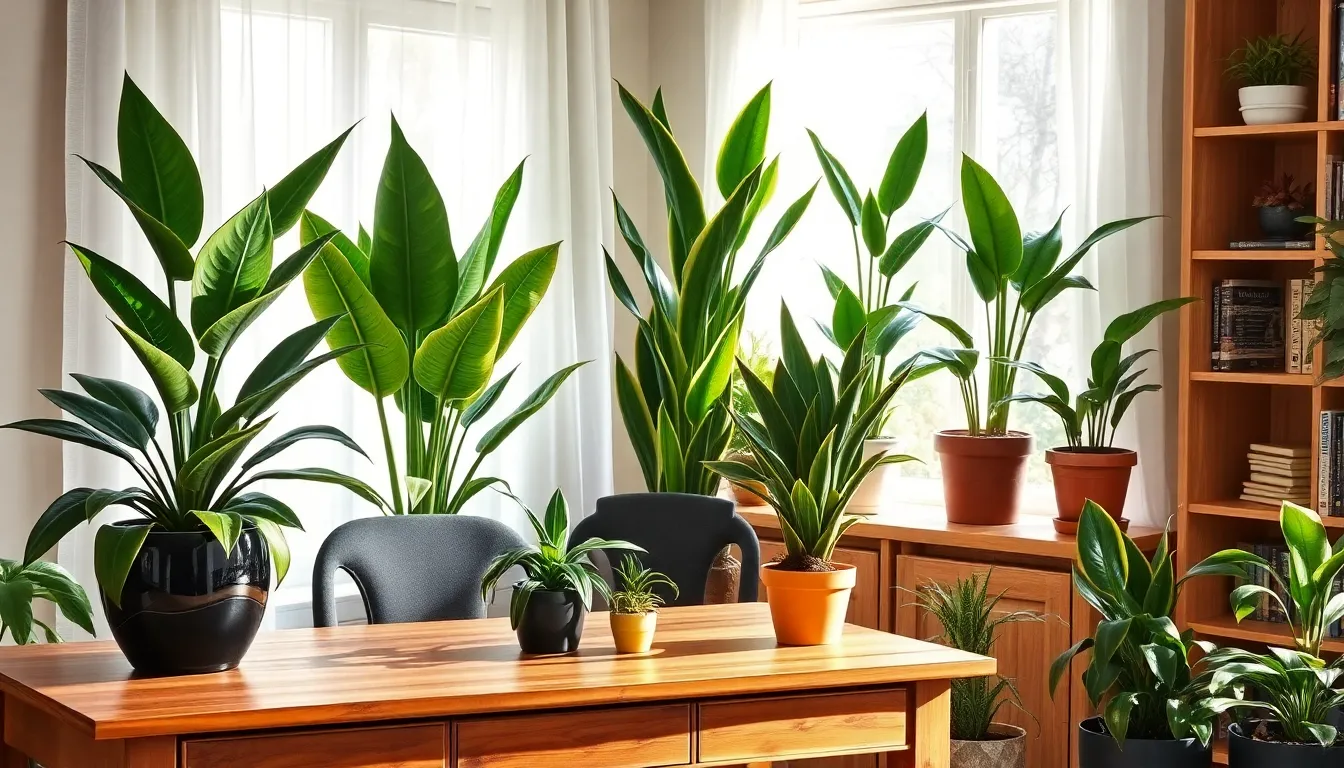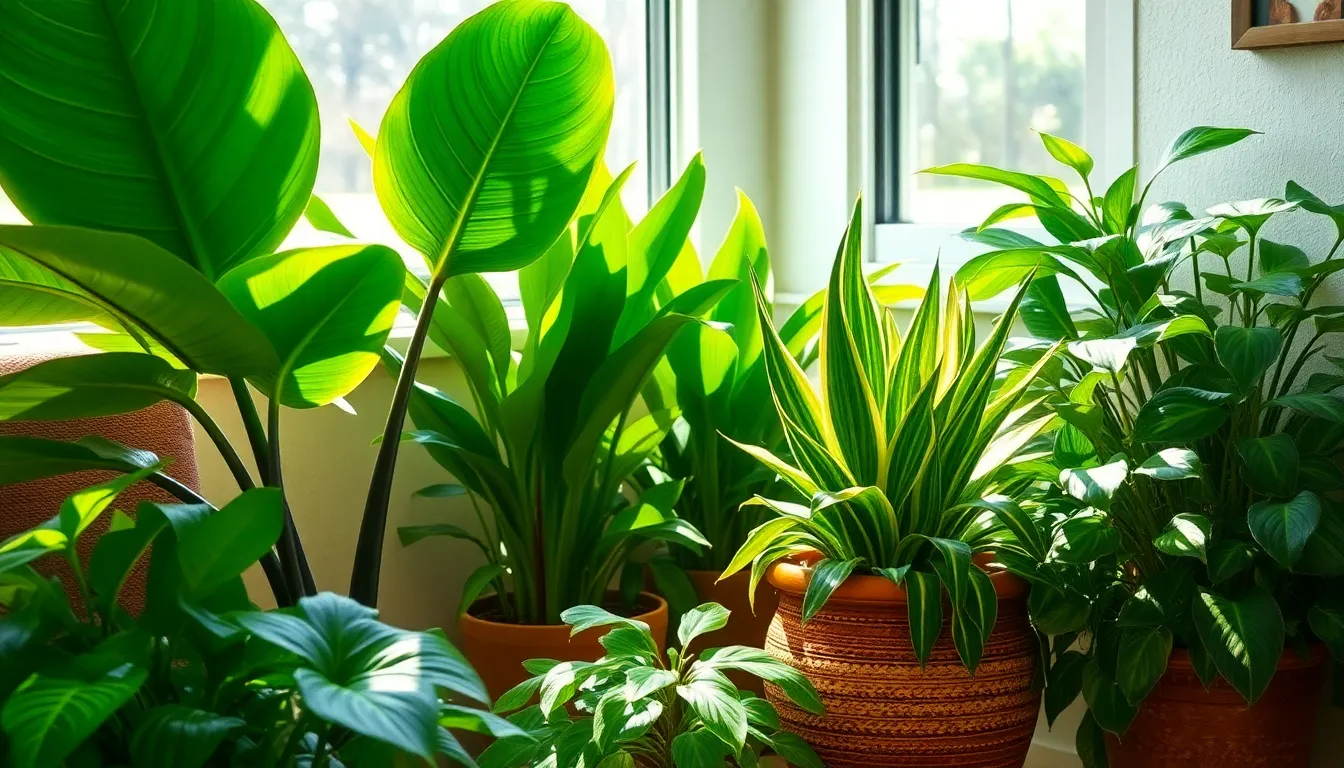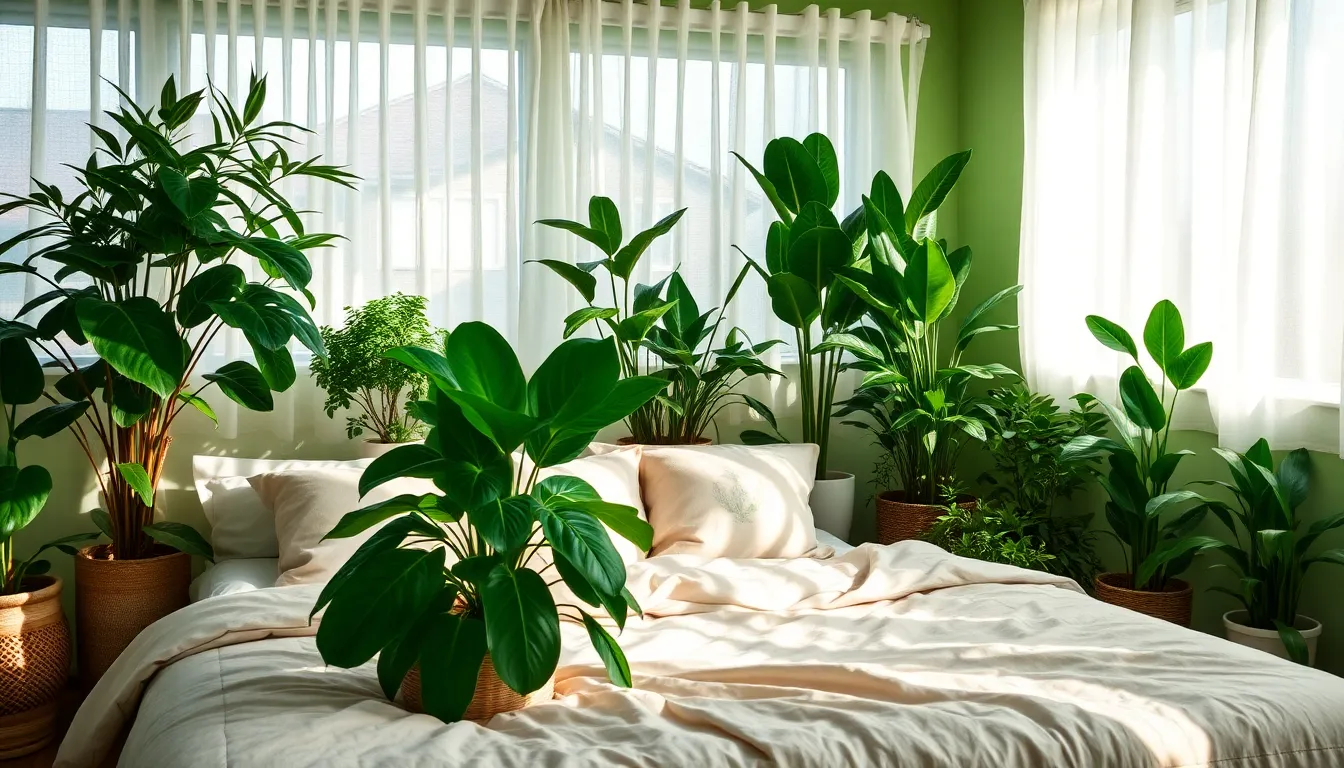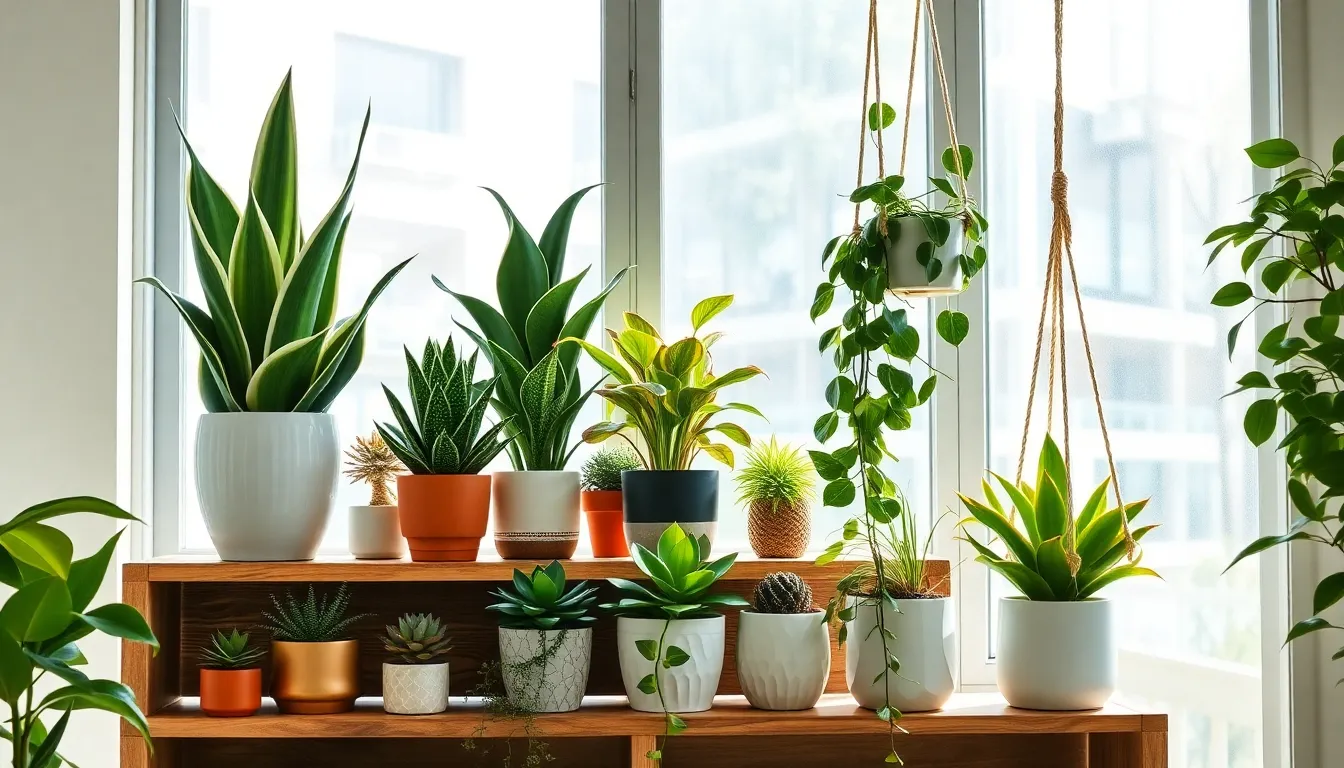In the bustling whirl of work-from-home setups, a touch of nature can transform your office into a sanctuary of productivity and calm. Whether you’re a novice gardener or a seasoned plant enthusiast, introducing houseplants into your workspace can boost creativity, purify the air, and provide a serene backdrop for your daily grind. More than just decorative accents, these green companions can significantly enhance your mental well-being and focus, making them an essential component of an effective home office environment.
Embarking on this leafy journey, you’ll discover a curated selection of ten stunning houseplants that thrive in varied lighting conditions and require minimal fuss. From the resilient Snake Plant to the elegant Peace Lily, each plant on our list has been chosen for its unique ability to brighten both your office and your mood. You’ll learn not only which plants are best suited for different spaces but also practical tips to keep them lush and thriving, even if you’re balancing a busy schedule.
For those who believe they lack a green thumb, fear not—this guide will arm you with the confidence and knowledge to cultivate your own indoor oasis. Experienced gardeners will find inspiration in our selection, exploring new varieties and creative ways to integrate them into their existing setups. As we dive into the world of houseplants, you’ll see how easily these natural wonders can blend into your workspace, offering tranquility and a touch of the outdoors, right at your desk.
Why Houseplants Enhance Productivity
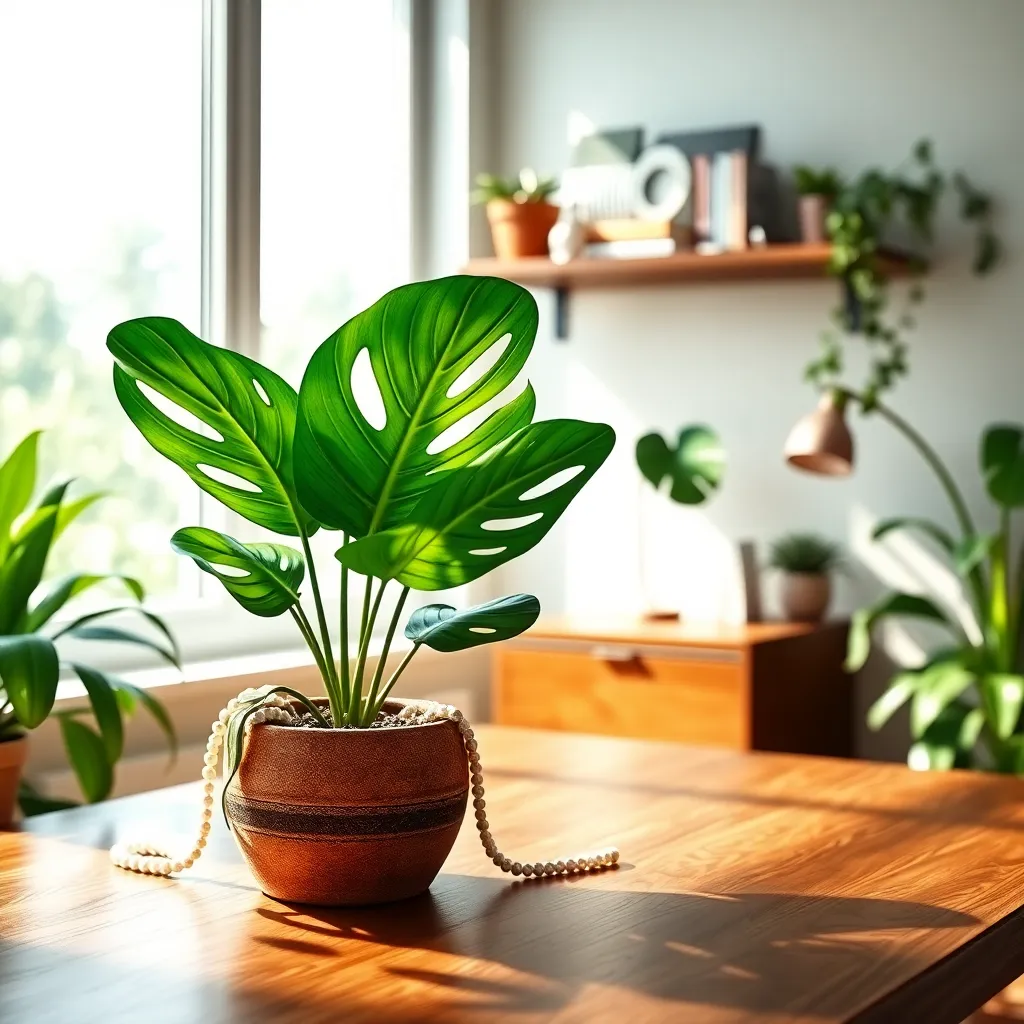
Houseplants have been shown to boost productivity by improving air quality and reducing stress levels. Incorporating plants like Spider Plants or Peace Lilies in your home office can create a more serene environment, enhancing focus and efficiency.
Choosing the right houseplants is crucial for maximizing productivity benefits. Opt for low-maintenance plants such as Snake Plants, which thrive in a variety of light conditions and require infrequent watering, typically once every two to three weeks.
A more advanced option for gardeners is the Fiddle Leaf Fig, which requires bright, filtered light and a well-draining potting mix to flourish. Ensure the soil remains consistently moist but not waterlogged, and rotate the plant periodically to maintain even growth.
To further enhance productivity through plant care, consider using a mix of cacti and succulents that require minimal attention. These plants prefer a gritty soil mix and benefit from a thorough soak every couple of weeks, allowing the soil to dry out completely between waterings.
Choosing Low-Maintenance Varieties
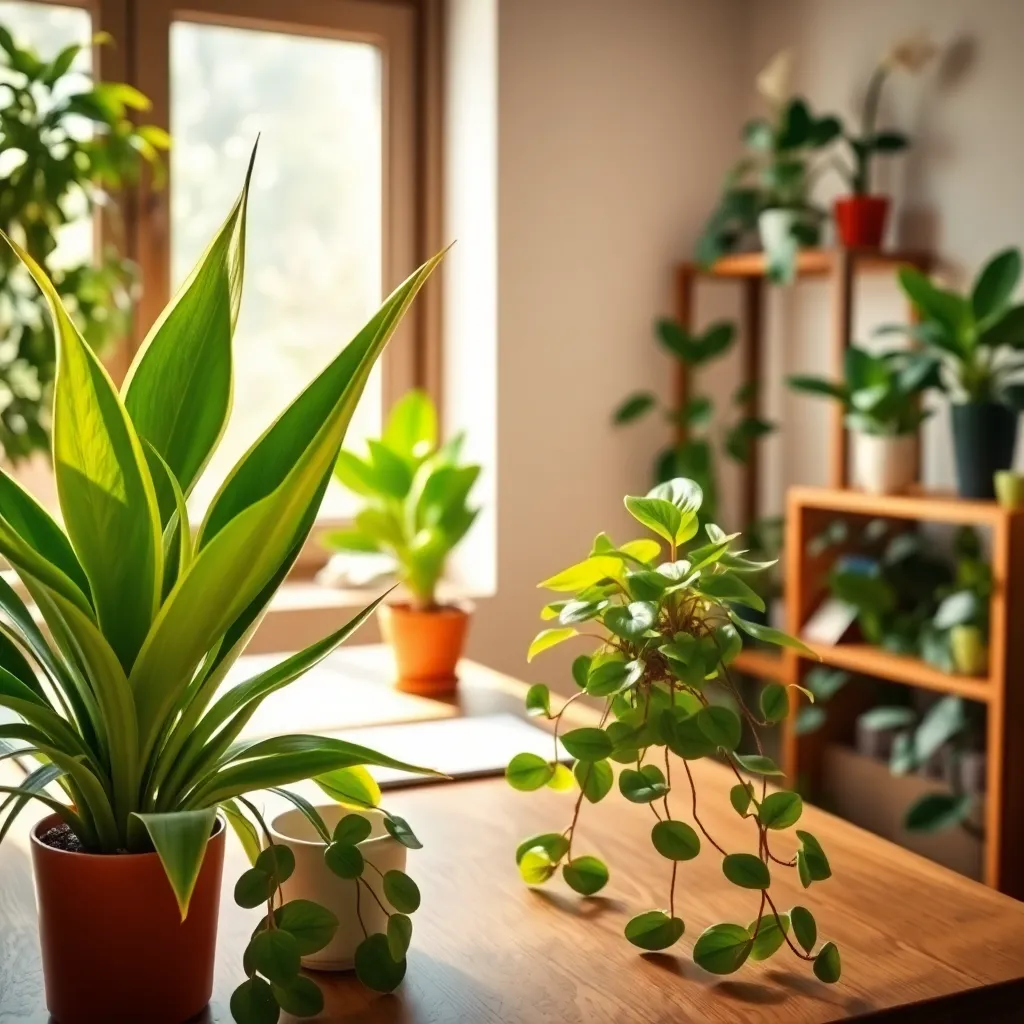
When selecting low-maintenance houseplants for your home office, consider varieties that thrive with minimal intervention. Snake plants (Sansevieria), for instance, are perfect choices as they require infrequent watering and can tolerate low light.
It’s essential to match the plant’s growing conditions with the environment you can provide. For example, the ZZ plant (Zamioculcas zamiifolia) not only thrives in indirect light but also can withstand periods of neglect, making it ideal for busy professionals.
Incorporating plants like pothos (Epipremnum aureum) can add greenery with little effort. Pothos are incredibly forgiving, thriving in a range of light conditions and requiring water only when the soil is dry to the touch.
For those looking for a splash of color, consider the resilient peace lily (Spathiphyllum). Peace lilies are known for their ability to flourish in low light and signal their need for water by drooping slightly, offering an easy care routine.
Perfect Plants for Small Spaces
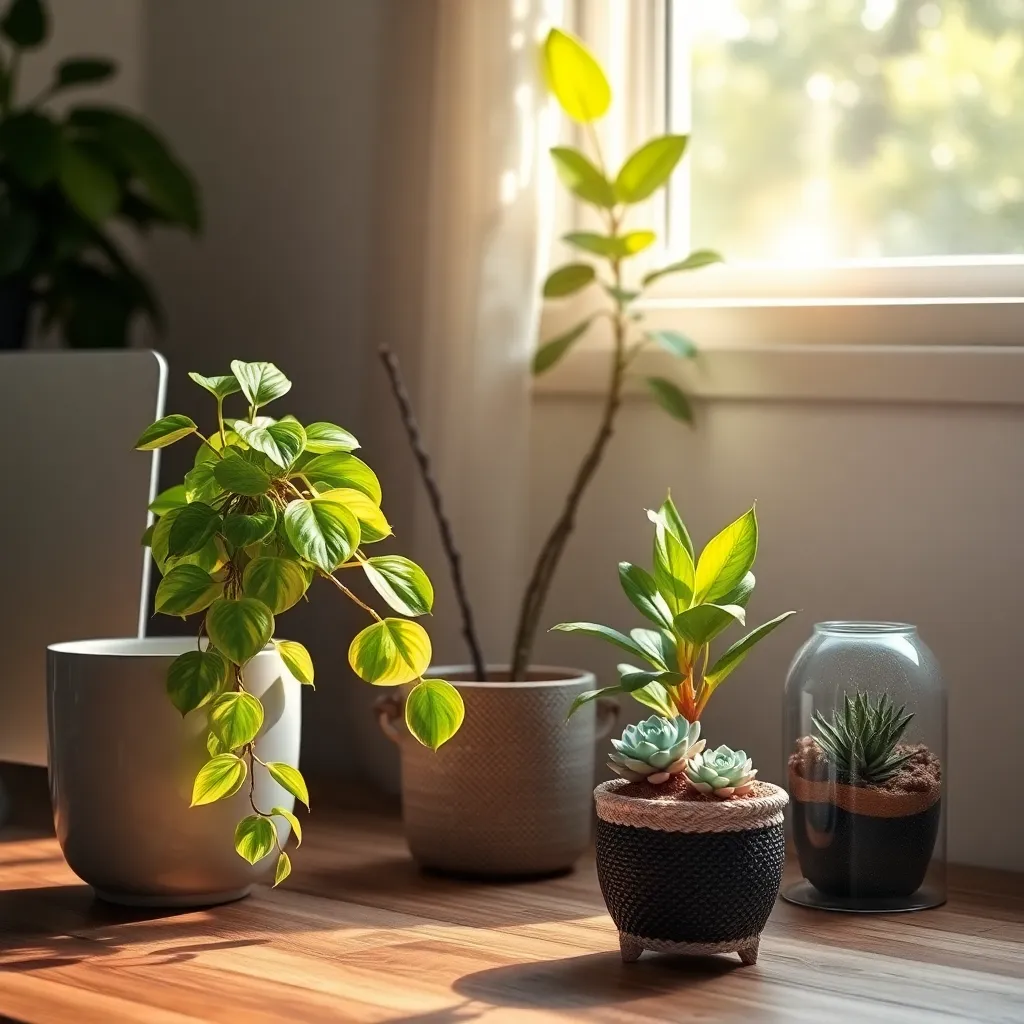
When space is limited, selecting the right plant is crucial to maintaining a vibrant and healthy environment. Succulents, like the popular jade plant, are excellent choices for small spaces due to their compact size and minimal water requirements. They thrive in well-draining soil and need watering only when the soil is completely dry, making them low-maintenance companions for your desk.
Spider plants are another compact option that fits perfectly in tight corners or on narrow shelves. They are known for their air-purifying qualities and can tolerate a range of light conditions, from low to bright indirect light, which makes them highly adaptable to varying office environments. To care for a spider plant, use a general-purpose potting mix and keep the soil slightly moist by watering when the top inch feels dry.
Avoid overcrowding by choosing vertical growers like the snake plant, which can add height without taking up much floor space. Snake plants are nearly indestructible and excel in low-light conditions, making them ideal for those who may forget to water regularly. Use a free-draining cactus mix and water only when dry to prevent root rot, ensuring your snake plant stays healthy and vigorous.
For those seeking a splash of color, consider the peace lily, which produces elegant white blooms and thrives on neglect. Peace lilies prefer medium to low light and enjoy being on the drier side, so water them only when the leaves start to droop slightly. Feeding them with a balanced liquid fertilizer every month during the growing season will enhance their flowering and overall health.
Boosting Air Quality Naturally
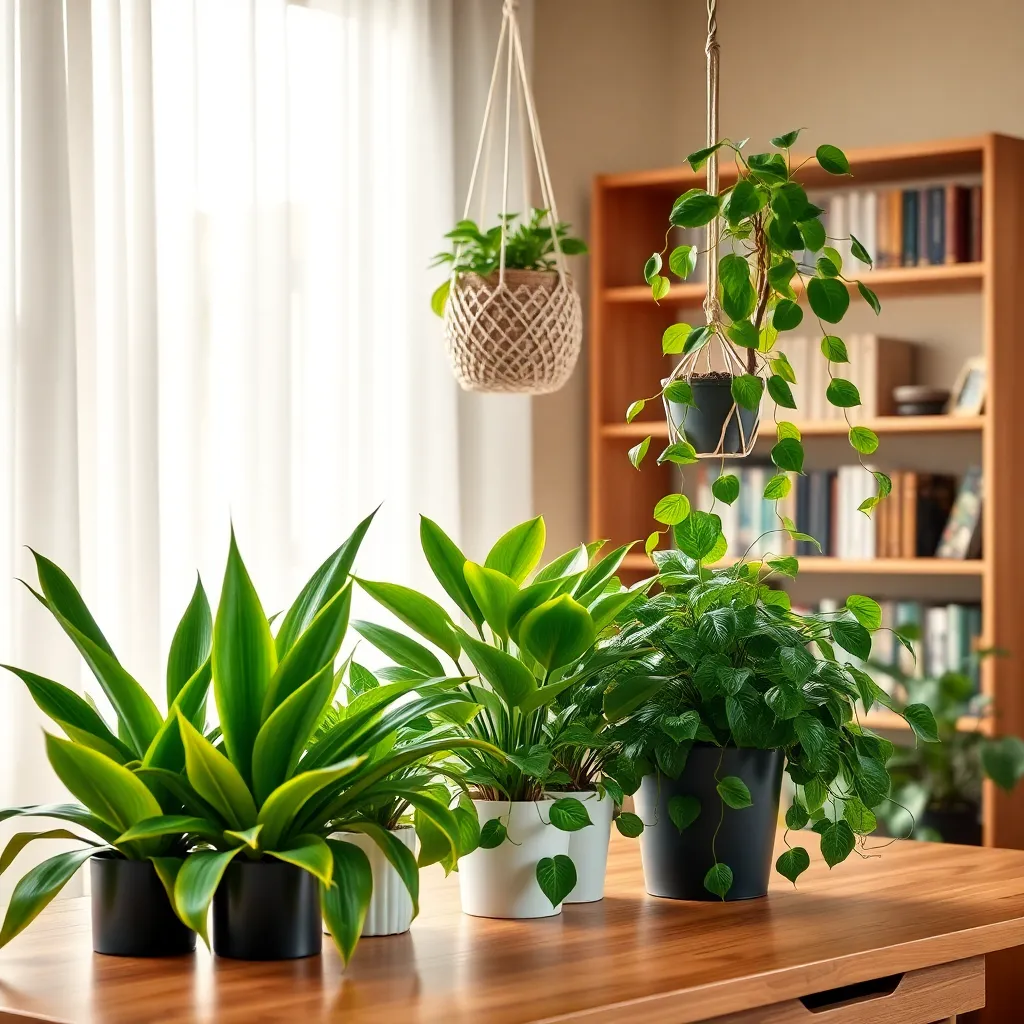
Improving air quality with houseplants is not only beneficial for health but also rewarding for the soul. Plants like the Peace Lily are excellent choices, as they are known to remove toxins such as ammonia and formaldehyde from the air.
For beginners, the Spider Plant is an ideal option as it thrives in indirect sunlight and requires minimal care. Water it once a week and ensure the soil is well-draining to prevent root rot.
Experienced gardeners might appreciate the challenge of the Fiddle Leaf Fig, which requires bright, filtered light and consistent watering. To boost its air-purifying capabilities, wipe the leaves with a damp cloth regularly to keep its photosynthesis process efficient.
Consider using a humus-rich potting mix for plants like the Boston Fern, which can help maintain the right moisture levels. Place this plant in a humid environment, or use a pebble tray to increase humidity, ensuring its lush growth.
Top Picks for Low Light
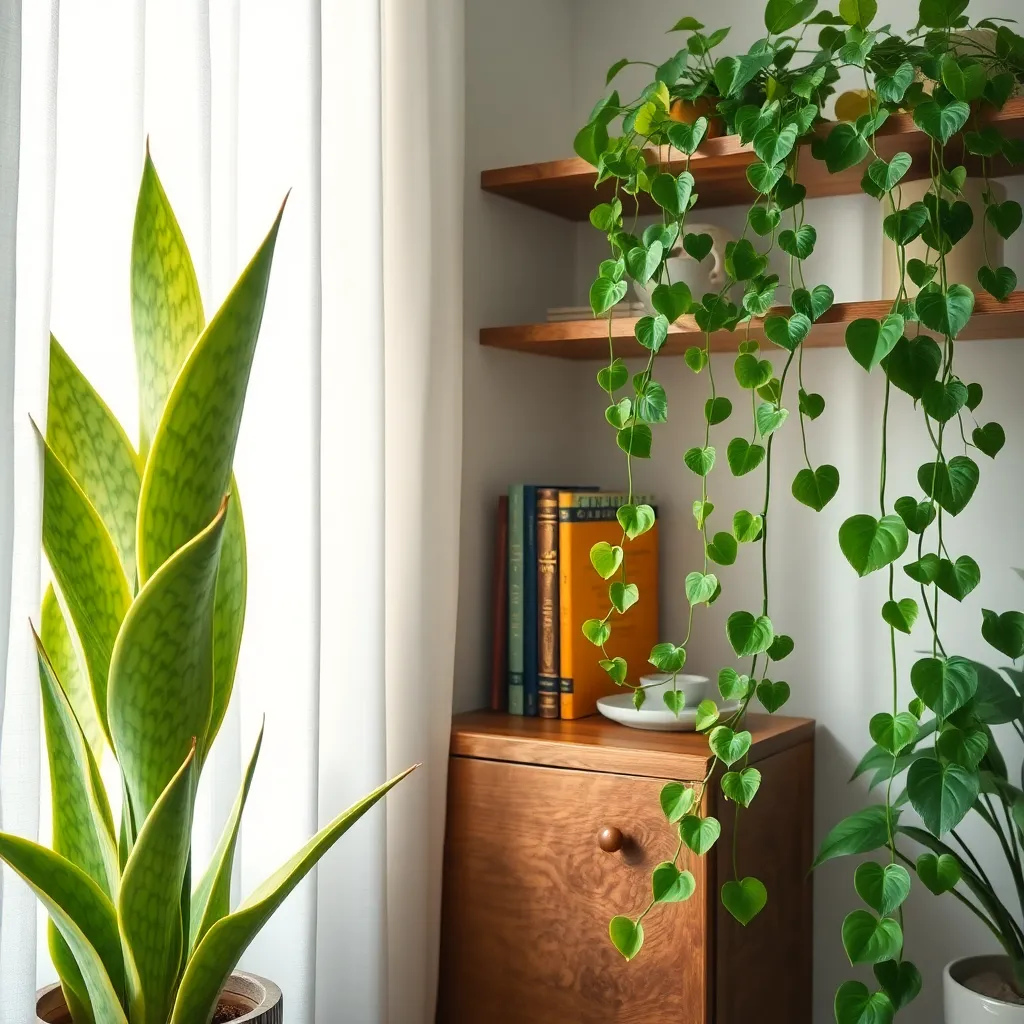
Adding greenery to a home office can be challenging if you lack natural light, but several stunning plants thrive in low-light conditions. Snake Plants (Sansevieria) are an excellent choice, requiring minimal light and infrequent watering, making them perfect for busy professionals.
To keep your Snake Plant healthy, use a well-draining soil mix and water only when the soil is completely dry. This plant is highly resilient and can tolerate a range of temperatures, so it’s a great option for beginner gardeners looking for something low-maintenance.
Another fantastic low-light option is the Pothos (Epipremnum aureum), known for its trailing vines and vibrant green leaves. Pothos can thrive in a variety of lighting conditions, including fluorescent office lights, and needs watering once the top inch of soil feels dry to the touch.
For those wanting to add a touch of color, the Peace Lily (Spathiphyllum) is an ideal choice. This plant tolerates low light and signals when it needs water by drooping slightly, bouncing back quickly once hydrated.
Peace Lilies prefer consistently moist soil, so aim to water them about once a week, adjusting based on the humidity in your office. Fertilize every couple of months with a balanced houseplant fertilizer to keep the blooms coming.
Vibrant Foliage for Visual Appeal
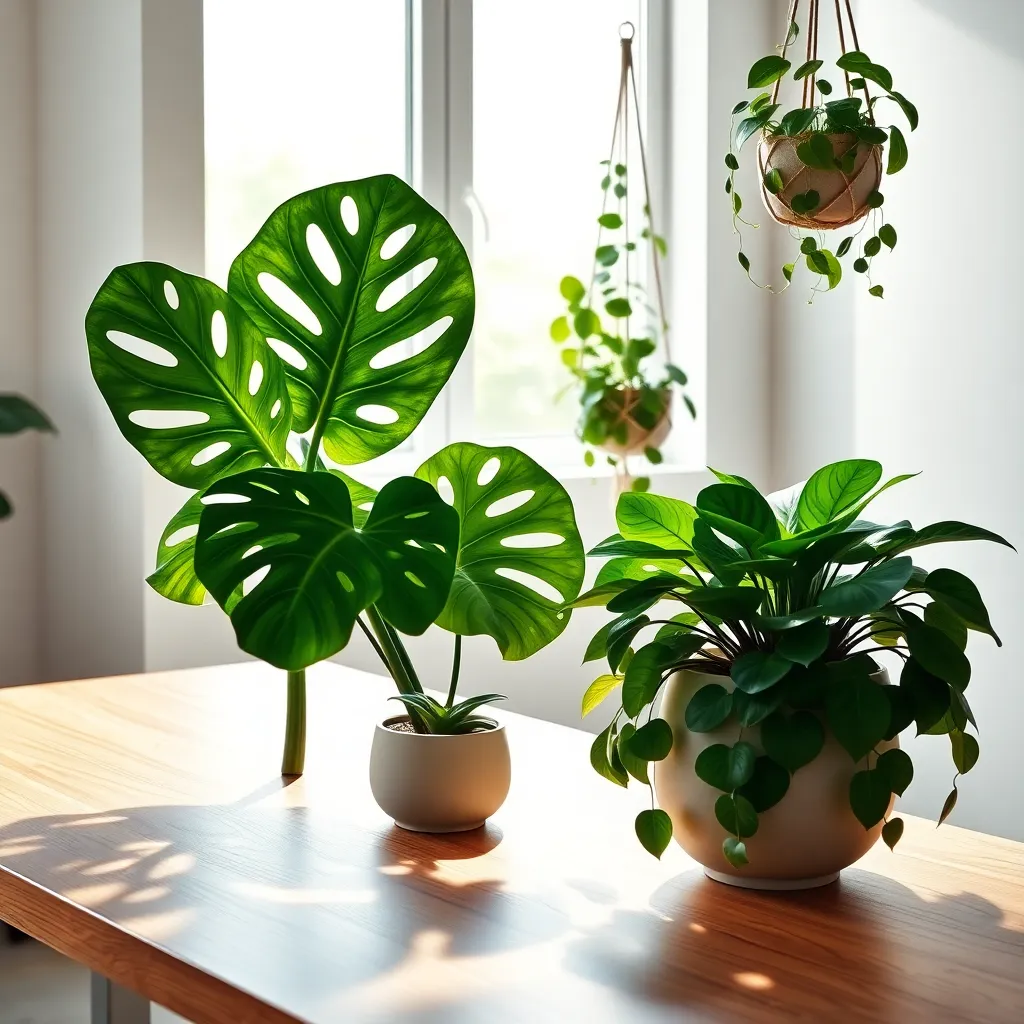
Incorporating houseplants with vibrant foliage can significantly enhance the visual appeal of your home office. Plants like the Calathea and Croton are well-known for their striking leaf patterns and rich colors, making them excellent choices for adding a splash of color.
Calathea thrives in indirect light and prefers a humid environment, which can be maintained by regularly misting the leaves or placing the pot on a tray of pebbles and water. Ensure the soil remains consistently moist but not waterlogged, using a well-draining potting mix to prevent root rot.
The Croton, with its bold and colorful leaves, requires bright, indirect light to maintain its vivid coloration. Water this plant when the top inch of soil feels dry to the touch, and use a balanced, liquid houseplant fertilizer every month during the growing season for optimal growth.
For those with a bit more experience, consider experimenting with variegated varieties that add texture and interest to your space. These plants might require a bit more attention in terms of lighting and humidity, but the dramatic effect they add is well worth the effort.
Maintaining vibrant foliage involves regular cleaning to keep leaves dust-free, which helps the plant photosynthesize efficiently. Use a soft, damp cloth to gently wipe the leaves, or give the plants a shower every few weeks for a refreshing cleanse.
Pet-Friendly Houseplant Options
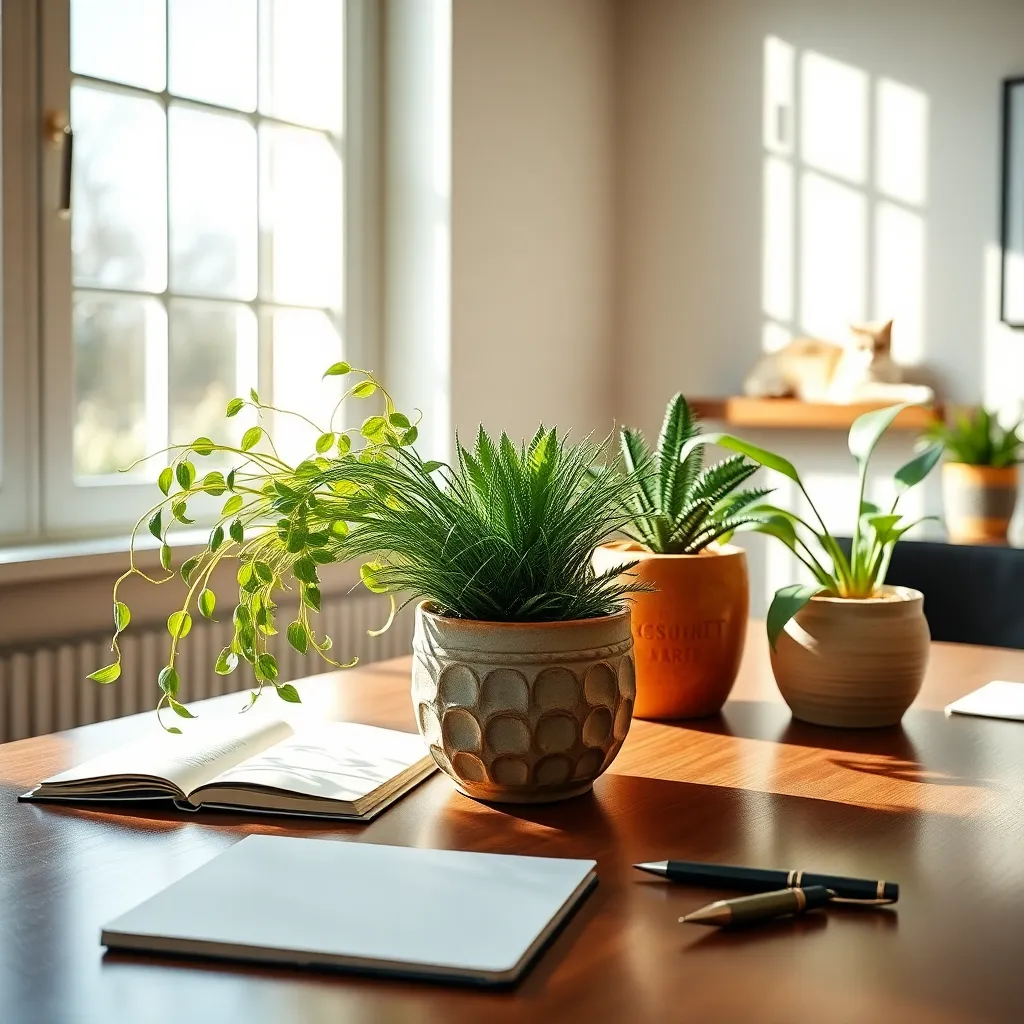
For those who share their homes with pets, choosing houseplants that are safe for furry friends is essential. Spider plants (Chlorophytum comosum) are an excellent option as they are non-toxic to both cats and dogs. They thrive in indirect sunlight and prefer a well-draining potting mix, making them easy to care for in any home office setting.
Another fantastic choice is the Boston fern (Nephrolepis exaltata), known for its lush foliage and air-purifying qualities. These ferns enjoy high humidity and should be placed in a spot with indirect light, such as near a window with a sheer curtain. Regular misting can help maintain the moisture levels they need, or consider placing a humidifier nearby for optimal growth.
For a touch of color, the Calathea (Calathea spp.) offers vibrant patterned leaves and is safe for pets. Calatheas prefer slightly moist soil and do well with distilled or rainwater to avoid mineral build-up. Ensure they are kept in a warm environment away from drafts, as their leaves can be sensitive to temperature changes.
When it comes to soil, pet-friendly plants like these generally thrive in a lightweight, organic mix that allows for adequate drainage. Consider blending a standard potting mix with coconut coir or perlite to enhance aeration and moisture retention. Regularly check for pests, as natural solutions such as neem oil can keep your plants healthy without posing a risk to your pets.
Succulents for Minimalist Desks
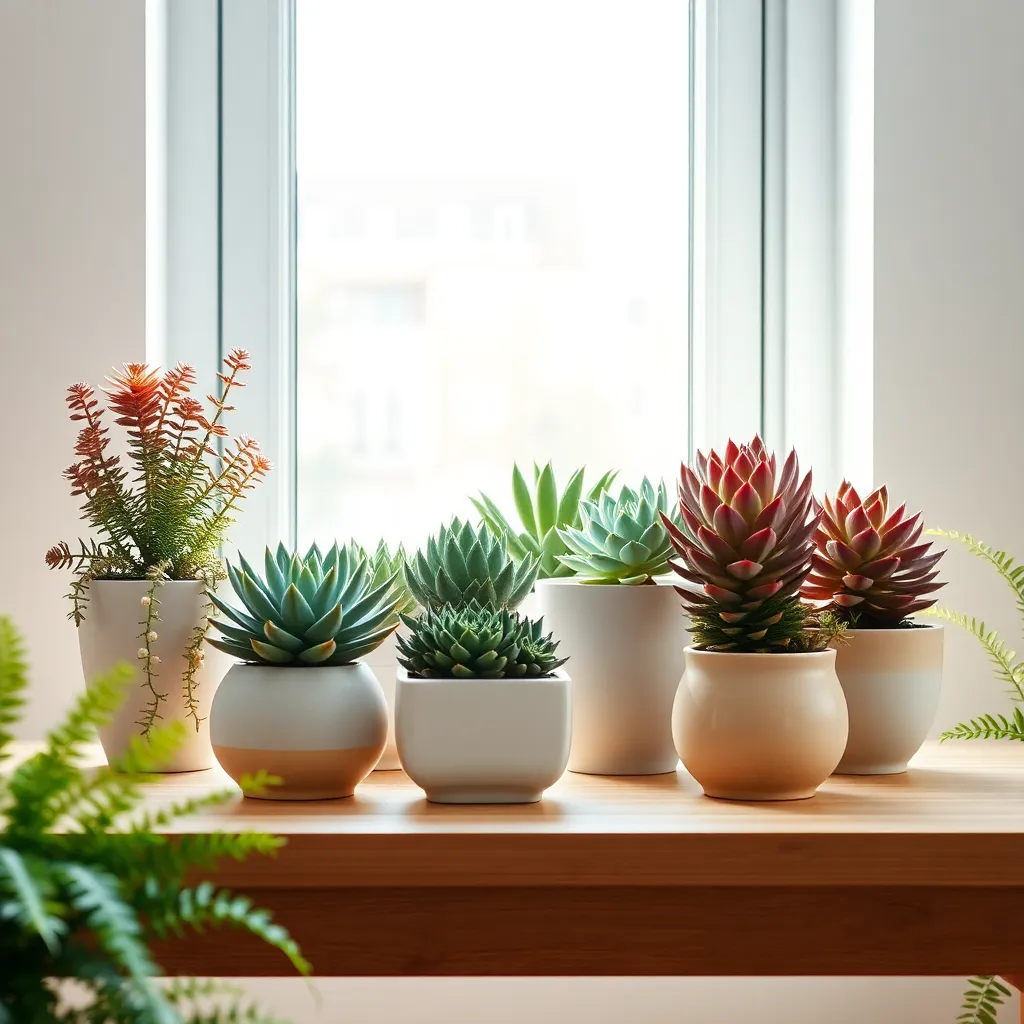
Succulents are an excellent choice for minimalist desks due to their compact size and low-maintenance requirements. They thrive in small pots, making them perfect for spaces where you want to keep things simple yet stylish.
Most succulents prefer bright, indirect light, so placing them near a window can help them flourish. Choose a well-draining cactus soil mix to prevent root rot, which is crucial for succulent health.
Watering succulents is straightforward—allow the soil to dry out completely between waterings. This typically means watering about every two weeks, but adjust based on your office environment’s humidity and temperature.
For the more experienced gardener, consider propagating succulents by gently removing a leaf and letting it callous over before planting it in soil. This not only expands your collection but also adds an interesting, hands-on element to your desk gardening.
Caring for Your Office Greens
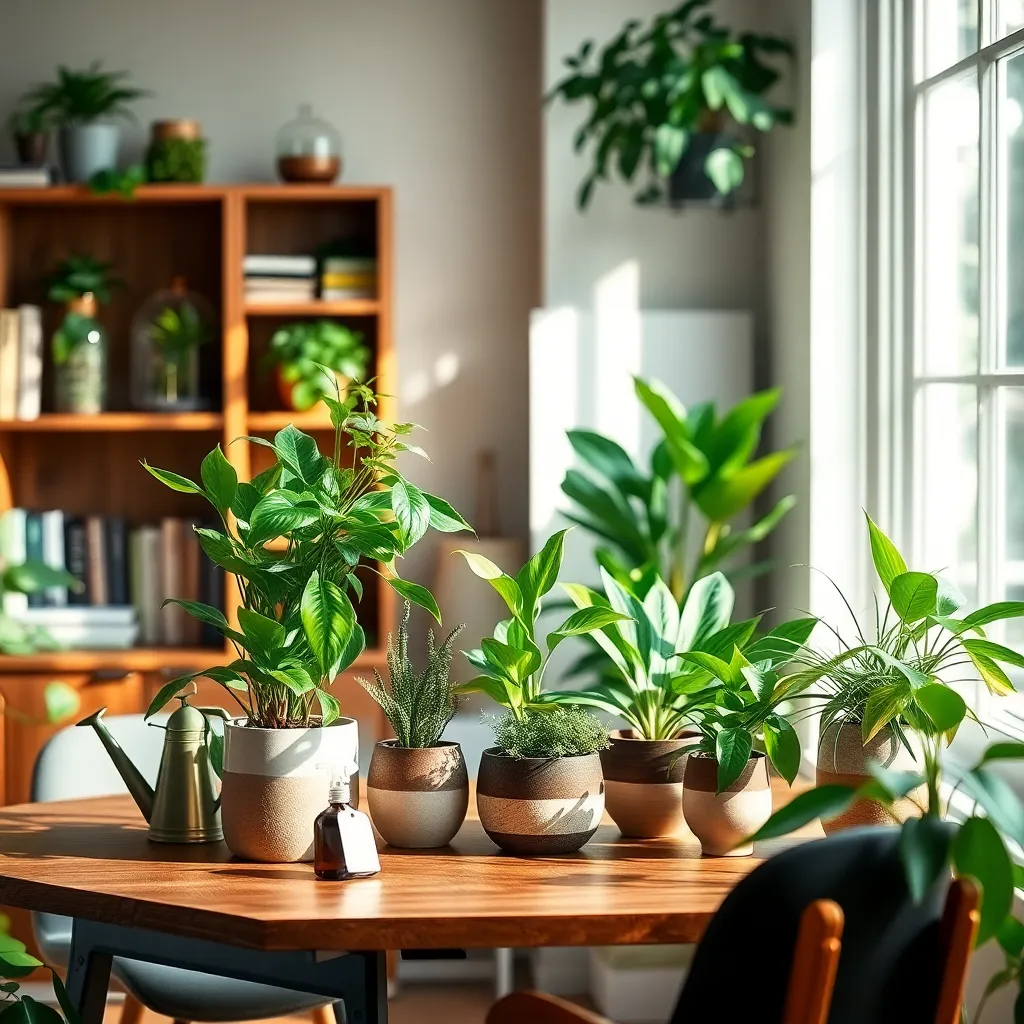
Office plants can thrive with the right care, making them a delightful addition to your workspace. Begin by ensuring your plants are in well-draining pots, as this prevents root rot—a common issue for indoor plants.
It’s important to adjust watering according to the plant’s needs; for example, succulents require less frequent watering, while ferns may need more moisture. Use the finger test: insert your finger into the soil up to the first knuckle; if it feels dry, it’s time to water.
Lighting plays a crucial role in the health of your office plants. Position plants like peace lilies or snake plants near windows with indirect sunlight, as too much direct light can scorch their leaves.
Regular maintenance, such as removing dead leaves and dusting off foliage, helps keep your plants healthy and vibrant. Fertilizing every few months with a balanced houseplant fertilizer can boost growth, especially if your plants show signs of nutrient deficiency.
For advanced enthusiasts looking to optimize plant health, consider monitoring humidity levels. Many office plants, like the popular pothos and philodendron, thrive in higher humidity, which can be enhanced with a small humidifier or by grouping plants together.
Rotating Plants for Balanced Growth
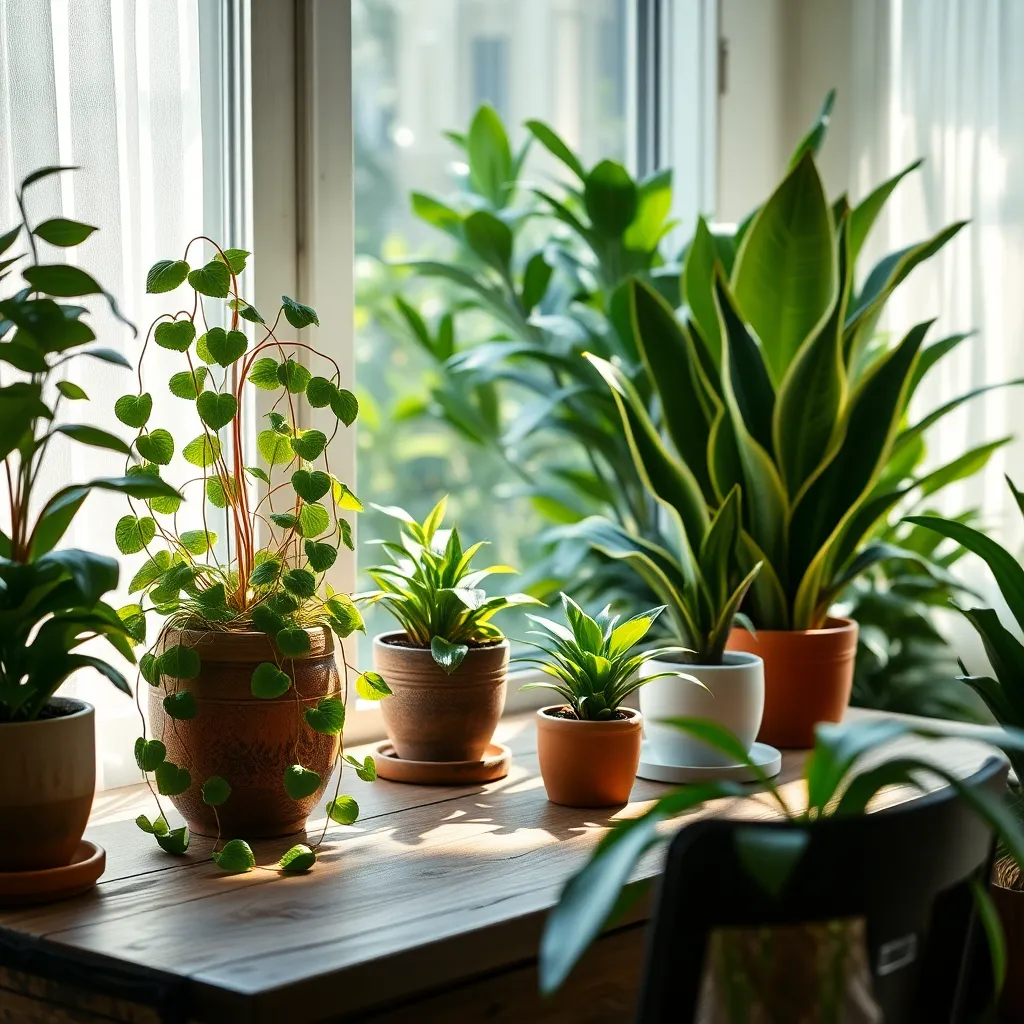
Rotating your houseplants is essential for promoting balanced growth and preventing them from leaning towards a light source. By turning your plants every couple of weeks, you ensure that all sides receive equal sunlight, which fosters a well-rounded and healthy plant structure.
For beginners, it’s important to understand that different plants have varying light needs. Some, like the Snake Plant, thrive in low-light conditions, while others, such as the Fiddle Leaf Fig, require bright, indirect sunlight to flourish.
To help your plants adapt to their environment, place them in a location that receives consistent light throughout the day. If your plant starts to lean or stretch, it may be an indication that it needs more light or a different spot altogether.
Advanced gardeners might consider using a light meter to measure the intensity of light in different areas of their home office. This can help you determine the best placement for each plant, ensuring they receive the optimal amount of light for their specific needs.
Conclusion: Growing Success with These Plants
As we’ve explored in this article, the beauty and benefits of houseplants extend far beyond their aesthetic appeal. Each of the 10 stunning houseplants—from the resilient Snake Plant to the air-purifying Peace Lily—offers unique advantages for your home office, enhancing not just your workspace but also your well-being and productivity. By incorporating these natural companions into your environment, you can foster a nurturing atmosphere that promotes calm and focus, crucial elements for maintaining harmony in your personal and professional relationships.
Now, take the first step toward transforming your space by choosing one plant from our list and placing it in your home office today. Notice how this simple addition uplifts your mood and strengthens your connection with your surroundings.
Remember to bookmark this article as your go-to guide for selecting the perfect houseplant that complements your lifestyle and relationship goals. As you continue to cultivate your environment and relationships, you’ll find that nurturing these small, green companions can be a powerful metaphor for the care and attention required to nurture meaningful connections. Embrace this journey, and watch as both your plants and relationships thrive.

